The current definition of Revenue Operations is “a business function aimed at maximizing the revenue potential of an organization.” But after that definition, you may find yourself asking what “revenue potential,” even means in your day-to-day world.
Well, the next time you storm out of your CFO’s office slamming the door because you got less budget than you asked for, consider asking yourself this question: Why is it that your CFO or CRO is so hesitant to approve more budget for your projects?
It may take a hard look in the mirror, but we’re willing to bet that the answer often boils down to the same point: a lack of confidence in projected returns. Which makes sense considering 3 of the 5 most commonly sited pain points of SaaS executives today are related to revenue leakage or inaccuracy with revenue recognition.
And with the lack of high-level visibility in today’s complex SaaS marketing campaigns, who can blame them.The lack of sales-enabled tracking and departmental disconnect has plagued the SaaS industry since demand gen stepped onto the scene. Which is exactly why Revenue Operations and the alignment and transparency it provides is such a powerful asset in 2021 SaaS marketing.
It’s easy to get tied up in the success of a single campaign or project. But true revenue generators know the importance of the bigger picture – of visibility. Revenue Operations is a B2B business function that has developed out of this need for marketers to have more visibility and control.
“The success of B2B SaaS businesses lies in sustaining existing recurring revenue as well as expanding with new revenue via up-sell and cross-sell opportunities – which is why it’s so crucial to eliminate silos between operational support teams. RevOps provides a single source of internal truth.” – SaaSOptics
And as Brad Smith, CEO of Sonar more concisely puts it:
“RevOps has quickly become a critical unit for businesses these days”
Luckily, we’ve developed this guide to help walk you through everything you need to know about Revenue Operations for B2B SaaS in 2021.
Revenue operations (or RevOps) is a function in B2B organizations that takes responsibility for the software, systems, and processes of all revenue-generating teams inside a company in order to optimize the business’s revenue potential.
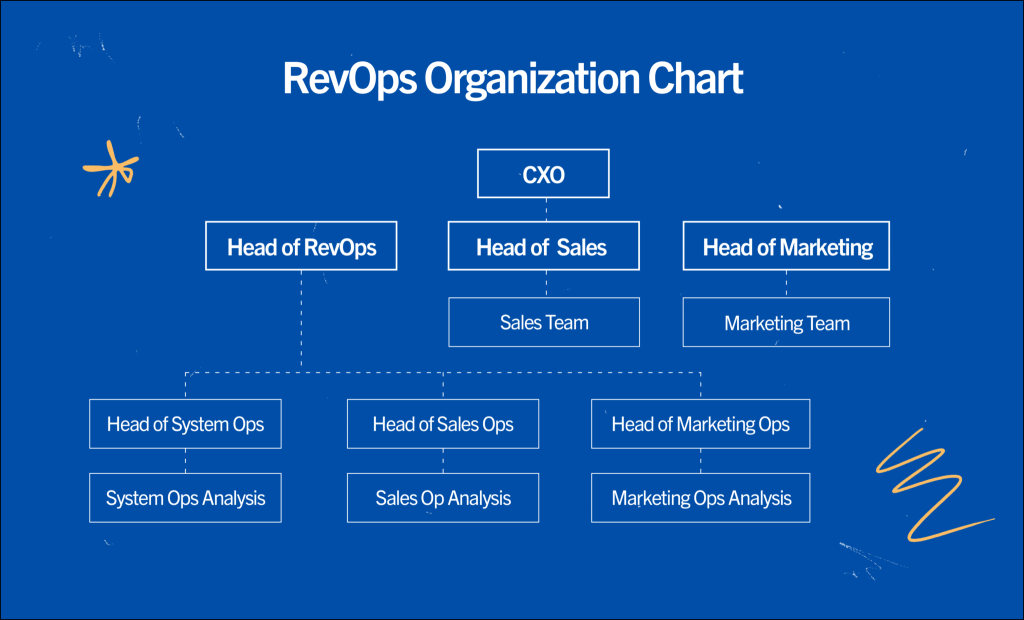
As we mentioned earlier, RevOps is vital to successful SaaS marketing strategies in order to provide a holistic picture of where your money is going and where it’s driving returns.
“[RevOps] lays the foundation for fostering cooperation between Marketing, Sales, and Customer Success teams – helping them define consistent goals, metrics, and processes.” – Ben Fuller | Strategic Systems Manager, SaaSOptics
With the extended sales cycle stages of a typical SaaS buyer, there are quite a few connection points to keep track of. Aligning your gap analyses with strong closed-loop tracking through RevOps makes each of your strategic optimizations more impactful.
Plus, the extra visibility and consistency should help you with those future CFO conversations.
Why RevOps Is So Important For B2B SaaS
The most successful SaaS strategies aren’t targeted at simply generating leads, they focus on generating customers and revenue. So, naturally, having a framework in place to align your different departments towards that singular goal is important.
However, Revenue Operations is only now gaining traction in the SaaS space. No wonder such a high percentage of B2B marketers list a lack of knowledge as well as budget restrictions as their chief complaints.

There is a rising need in SaaS for transparency and accountability across integrated departments. Understanding where the gaps are in your revenue stream and where they can be optimized is vital to success.
This is because the way that consumers shop online – especially in the B2B SaaS space – has changed.
Customers go through long phases of research and consideration before even considering getting in touch with a sales rep. And with the subscription model and freemium pricing models increasing in popularity, what happens after that initial acquisition is just as important as what happens before. Which means that all of your different departments from marketing, to sales, through customer success – need to align properly.

As it says it the diagram above – the opportunities that RevOps identifies are the needle movers you need to prioritize. Opportunities that previously, you probably weren’t even able to see.
Now, establishing a solid Revenue Operations framework to find and optimize connections between your departments is a good start.
But it’s only a start.
Ultimately, the purpose of well aligned Revenue Operations is to improve predictability when scaling and confidence when testing. It provides you with a team dedicated to “following the money.” Understanding where your budget goes, where it drives returns, and where it’s falling through the gaps, is worth taking the time to track well.
RevOps Roles And Responsibilities
Now you might be wondering how you can actually create a job description around such high-level responsibilities. Don’t worry. It’s been done.
In fact, RevOps related jobs are popping up more and more as the strategy gains traction:
“Revenue Operations job titles on LinkedIn are increasing across the board. In the past 18 months, VP of Revenue Operations titles increased by 300%.” – Clari
And according to Forrester even back in 2018, job titles like CRO to Director Of RevOps (as opposed to traditional Sales Ops) also saw dramatic increases.
So what do the responsibilities of these new Revenue Operations professionals include? What are there day-to-day Jobs To Be Done? You can check out the chart below for a more in-depth look.

Notice one thing all four of those columns have in common?
That’s right. Analytics.
And not just any analytics, SaaS analytics.
That’s because the best RevOps strategies are deeply woven into the analytics and financial modeling of any business. Which is why having clean, closed-loop tracking and a clear understanding of your LTV CAC is so important.
Important RevOps KPIs
Nailing down the KPI’s for a framework that encompasses three high-level departments like Marketing, Sales, and Customer success isn’t easy. But knowing which KPIs to properly align your RevOps strategy to will make all the difference.
“It’s not as easy as an [lead] target you might have for Marketing, a pipeline coverage number you might have for Sales, or a churn rate target you might have for Customer Success.
Revenue Operations helps all three departments be more efficient by identifying gaps in the process, streamlining operations, and improving alignment – but how do you measure that?” – Dan Bruce | Product Marketing Manager, Varicent Lift
Here are a few Revenue Operations KPIs we like to focus on:
- Value / LTV (Lifetime Value): the value (in revenue) of closed/won deals and or activated customers over a lifetime
- Customer Acquisition Costs (CAC): what in costs (in potential revenue) to move a prospect all the way from unaware to closed/won
- Closed/Won Volume: the total volume of deals moving through the sales cycle to completion, turning into actual revenue
- Acquisition Speed: time it takes to take transform a prospect all the way from apathy, to action, to acquisition, to retention
- Conversion Rate(S): rate at which deals are moving from stage-to-stage within marketing and sales cycles towards revenue
- Drop Off Rate – the rate at which customers fall out of the sales cycle at any stage between any department and/or campaign
Following these KPIs will keep your RevOps strategies focused on what matters most – improving the customer experience and driving more revenue.
Sprinting blindly into the dark with your revenue-generating systems can lead to some seriously wayward campaigns and costly budget burn. Consider the chart below for what your strategic prioritization might look like with versus without properly aligned RevOps.
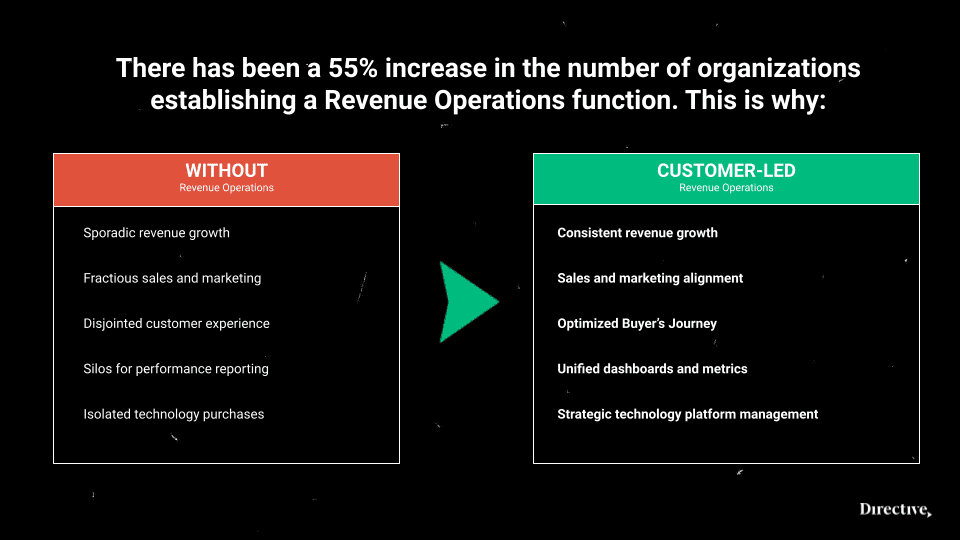
How RevOps Supports Growth And Sales
Now, there are four essential ways in which RevOps helps support your business growth and sales. Each provides a direct value towards optimizing revenue, when properly aligned.
Finding The Gaps That Need To be Filled
Revenue Operations allows you to identify which gaps between your campaigns and departments can be optimized to increase efficiency and revenue generation.
“Silos between sales, marketing, and customer success ops are a relic of an old, product-focused sales methodology that has long been dethroned.” – Collin Stewart | CEO and Co-Founder, Predictable Revenue
Optimizing The Customer Experience
It allows you to better understand where your campaigns are generating actual revenue – as in where they are best connecting with customers. This allows you to know where to double down on memorable experiences and start improving others. Instead of focusing on how well your vanity metrics are performing in each silo, RevOps aligns all of your marketing and sales efforts towards a singular customer journey.
“What Revenue Operations is trying to do is to be the sole hub of all the customer information and helping to know what information needs to be shared between formerly siloed departments.” – Rachael McBrearty | CCO, LeanData
This helps you focus your optimizations on the connection points between your different campaigns to improve the customer journey as a whole.
Predictability When Scaling
RevOps also improves visibility into where your budget is generating the greatest returns. Which allows you to have a better idea of when to pull the lever to scale. While also giving you back your confidence when investing in new test strategies.
“RevOps amplifies the marketing strategy by allowing campaigns to reach audiences at scale. It gives you confidence when you choose to pull the lever for more. ” – Sean Madden | Marketing Operations, Directive
Increased Efficiency And Effectiveness
Last, and most certainly not least, it makes you better at what you do. The end goal of RevOps is simple, after all: to help generate more revenue. When done right, it not only increases the efficiency at which your business generates customers and revenue, but the volume as well.
“RevOps is quickly transitioning to becoming today’s orthodoxy on how to best manage the contract to differentiate through billing, increase CLTV through customer insight, and maximize valuation through proper revenue recognition and cash management.” – David Apple | Head Of Software & SaaS, Sage Intacct
Implementing A Customer-Led RevOps Approach
Now that you know the value of Revenue Operations as a whole, we can dive into refining your RevOps strategy to better align with your end customer. If you want to take it one step further, you’ll consider Customer-Led Revenue Operations.
The Directive approach to RevOps includes our Customer Generation framework in order to better align strategic insights and optimizations towards driving new customers as opposed to simply improving ROI.
Instead of aligning our RevOps strategies towards completing projects or increasing conversion rates, we should be focusing on improving the customer experience to generate new customers. That – at the end of the day – is how you drive new revenue and grow ROI, after all.
For starters, let’s look at the basic difference between a siloed business structure and a RevOps framework:
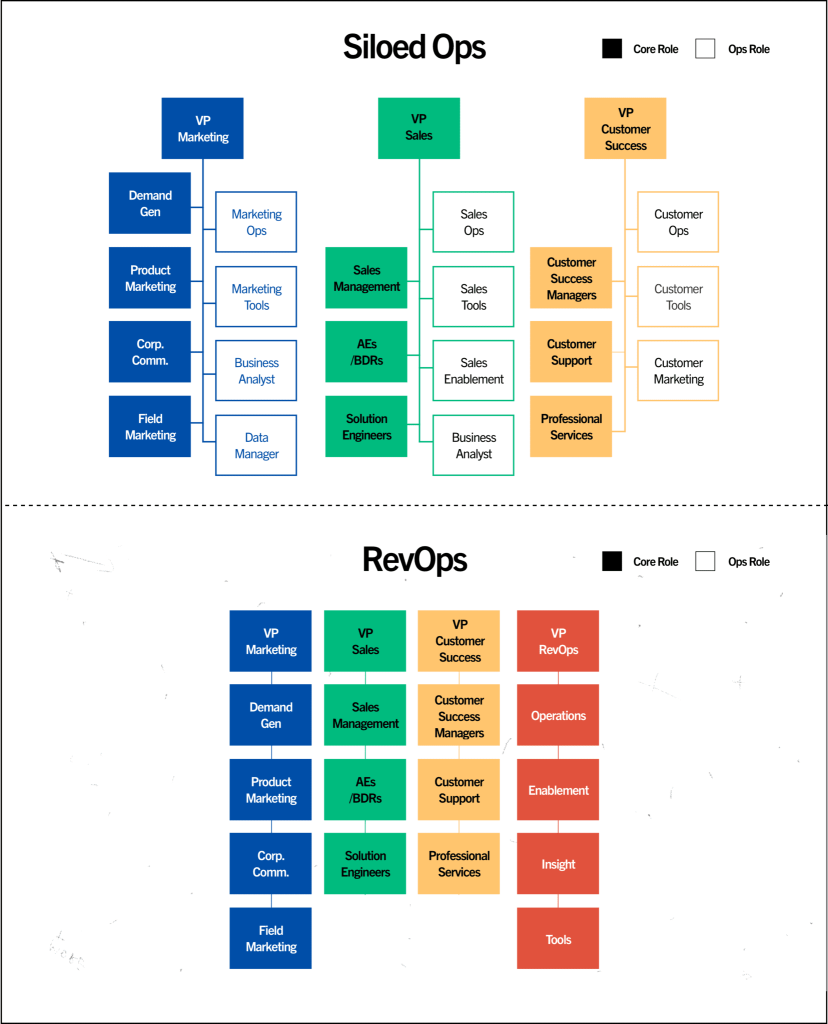
Now, let’s dive into what a Customer-Led RevOps approach looks like:
Customer Journey Audits Find Disconnects
As opposed to traditionally aimless audits focused on MQLs and vanity metrics, Customer-Led RevOps focuses your audits on what matters most – the customer experience.
Revenue Operations audits should include in depth analysis of your customer journey. Identifying potential areas of disconnect by tracking Drop Off Rate can bring valuable insights. Insights that will help you improve the flow of customers through marketing, sales, and beyond.
This starts with defining your ideal customer profile and sticking to it. The truth is in SaaS that your product/service isn’t meant for everyone. Taking the time to curate a defined list of target accounts will help you narrow down who’s worth talking to and who isn’t.
Defining your Total Addressable Market (TAM) is a vital first step in knowing what customer experience in particular you’re trying to improve.
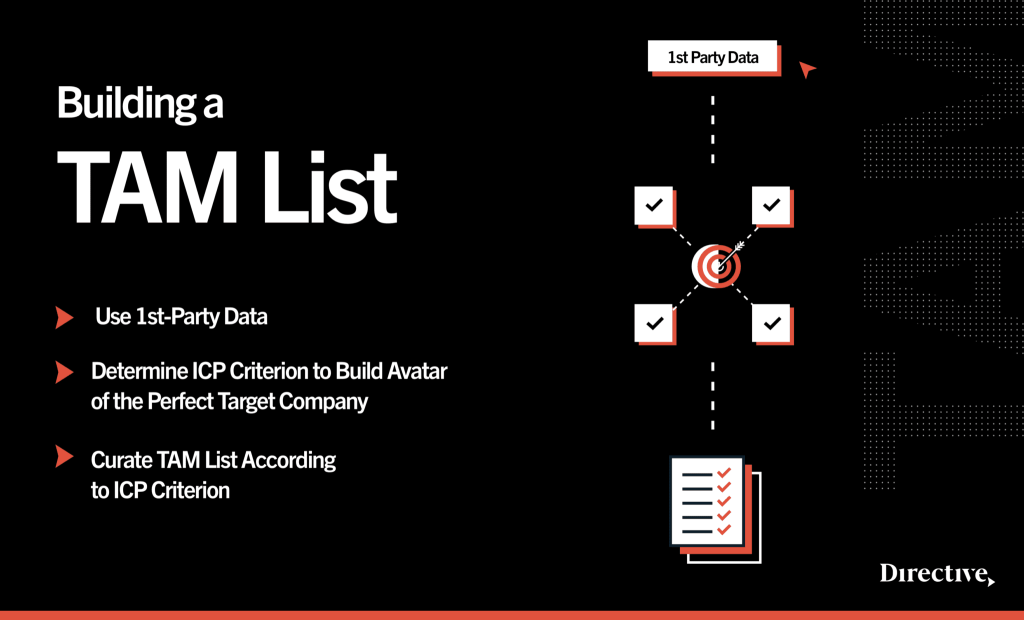
Analyzing Lifecycle Stages For Financial Modeling
Once you’ve identified your different drop off points, it’s important to remember not to go blindly in and optimize everything you can. Take your time. Choose wisely.
This is why financial modeling is so important to successful Revenue Operations frameworks.
Close-loop tracking is an absolute must for successful Revenue Operations in order to provide a complete and accurate picture of where budget turns into revenue.
But setting up clean offline conversion tracking is only step one. Step two is knowing how to project the value of any given optimization. This is where LTV and CAC come back into the picture.
If you’ve properly setup offline conversion tracking, you’ll have a solid picture of both your LTV and CAC. The goal is to increase the first while lowering the second (we like to shoot for a 3:1 LTV:CAC ratio for our financial modeling and test projections).
Identifying the costs for a potential optimization and the value of its success will enable you to project new revenue with each project. No more paying on a prayer.
Remember our little conversation about the CFO and the door-slamming? Consider this your secret weapon to winning that budget you’ve always dreamed of.

Build (Or Rebuild) Towards Revenue Potential
Now, you finally get to move from analysis and projection into implementation and optimization.
Building – or rebuilding – your different departmental tech stacks can be a tall order. But remember what Shel Silverstein taught us all as kids:
“How do you eat a whale? One bite at a time.”
Knowing which departments, which systems, which tools, and which campaigns to rebuild or re-invest in makes each step towards growth that much more steady and confident.

Each optimization should be focused at improving one of the core KPIs we listed earlier in this post. RevOps drives revenue. So stay focused on improving LTV, on lowering CAC, on improving Acquisition Speed, and lowering Drop Off Rates.
This is where the integration of today’s Customer-Led Marketing Ops approach begins to align with RevOps. Aligning your optimization suggestions towards generating more customers and revenue, instead of aimless execution, is what defines a customer-led strategy.
Optimizing the connection points between your integrated campaigns is the first step in start to look at optimization on a holistic, customer journey level.
For example, everyone news that lag time between conversion and follow up is a common gap that plagues many marketing-sales handoffs. Optimizing this exchange with clean automation and lead routing using tools like Segment to integrate different data points and platforms is one way to improve this customer experience.
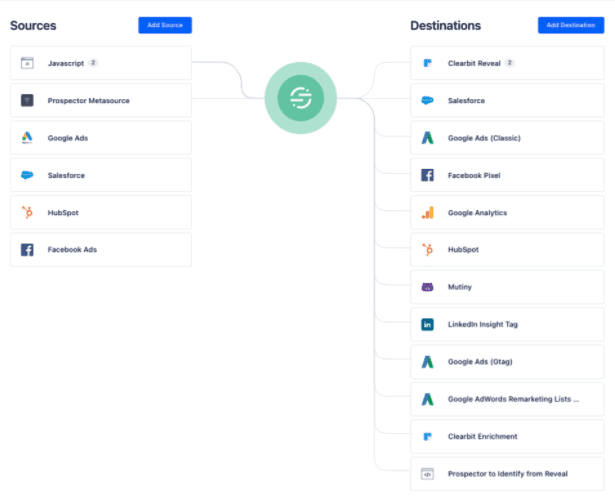
This is where email automation starts to fall under the purview of Revenue Operations, as well as other revenue optimization tools. One that we love here at Directive, is Chili Piper.
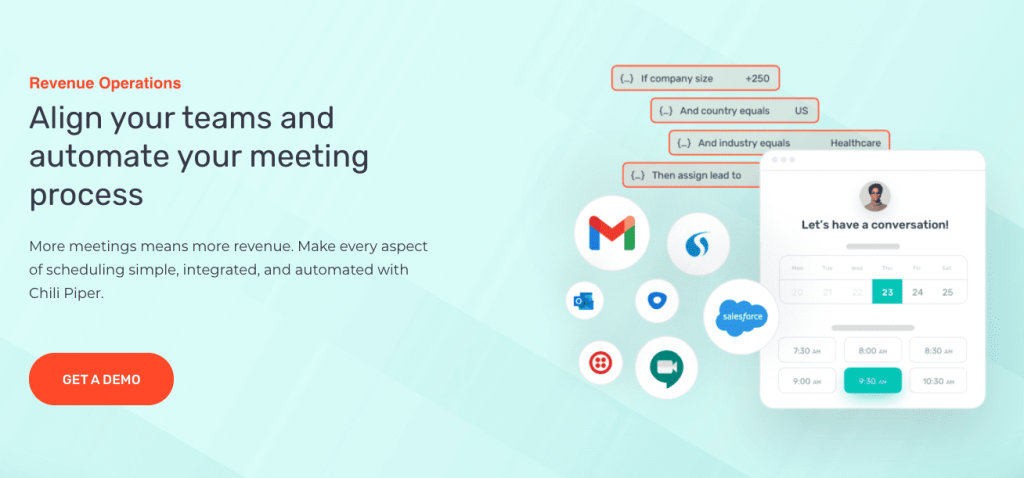
Chili Piper helps improve how you book meetings with prospects, including automated reminders and has helped many B2B brands double their conversion rates in one of the most valuable KPIs – meetings held.
Another great revenue optimization tool that we like to use here at Directive is Gong.io. Gong was originally created to help Sales Directors listen in to sales calls with the help of AI to tag specific buzz words or kill words effecting close rates. But it’s truly evolved beyond that.
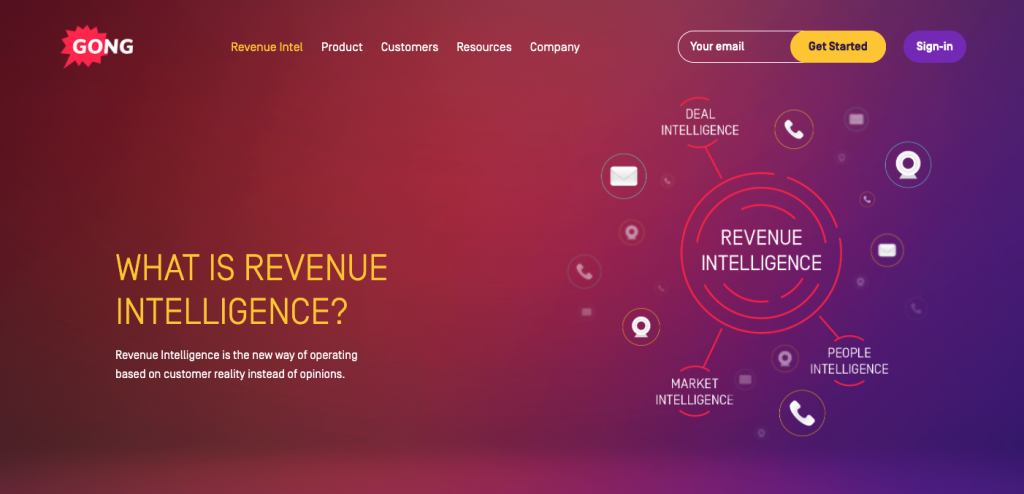
Their new “revenue intelligence” pivot can be considered their tailoring their service to the most valuable use-case of their customers. What is that, exactly? A direct line to customer journey information that can help empower Revenue Operations decisions.
This is how we use Gong to optimize our connection point between the Intro Call and Strategy call of the customer journey. This is the power of better visibility into your customer’s actual experiences with your brand.
“Revenue professionals are all searching for clarity about their customers amongst obscure data and information. We have come to accept confusion as the norm given the limited, stale, and distorted data in our CRM – the “single source of truth.” With markets, customers, and talent changing faster, and demanding more, it is critically important that we have access to our customer reality.” – Gong.io Revenue Intelligence

Optimize – There’s Always A Needle To Move
Each conversion point is an opportunity to optimize your revenue-generating potential. Even if you’re trying to move that prospect from one step of the journey to the next just a little bit faster, you’re in the realm of RevOps.
But each step forward is only that – one step forward in a never ending journey of growth.
Always remember that regardless of how well one system is performing, there is always another needle to move. RevOps is a never-ending search for the next revenue optimization opportunity.
The more complex and sophisticated SaaS strategies and tech stacks become, the more important RevOps will be.
And let’s not forget, the more digitized and diverse the market becomes, the more important it will be to be able to stay ahead in the SaaS space.
“In ten years it’s safe to say that every company will be a tech company and they will all be pursuing the unit economics that the SaaS business model brings to the table.” – Garrett Mehrguth | CEO and Co-Founder, Directive
Conclusion: The Competitive Edge In SaaS
What today’s SaaS marketing strategies need isn’t more MarTech and sales enablement tools, but better visibility into the way we use them.
What we need now from our revenue generators isn’t more tools to track your cash flow, but more creative strategies to optimize it.
We need a better view of the system as a whole in order to better connect each of the different pieces in the most efficient manner.
We aren’t playing the game of tossing leads into a funnel anymore.
We’ve moved past the days of demand generation and hoping that MQLs can consistently translate to revenue. We’ve now entered the days of Customer Generation. And Revenue Operations is only one of the vital steps in that evolution.
As we said before, true revenue generators understand the value of the bigger picture. Are you ready to increase the value of yours?